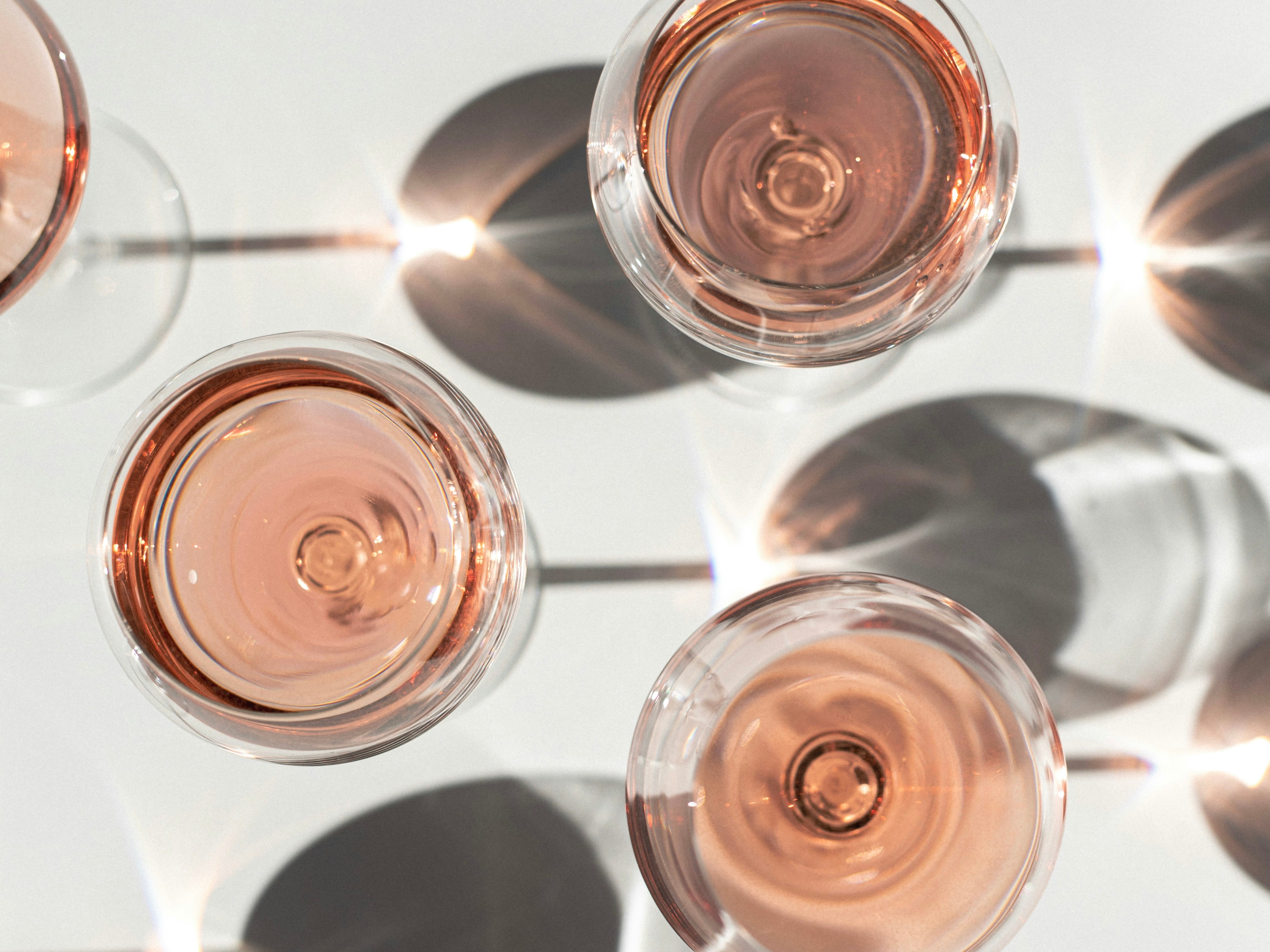As rosés get lighter and lighter, Henry Jeffreys asks why the colour of wine is so important
‘Look at the colour on that! I’m not drinking that, and I’ll drink anything.’
I was hosting a tasting at Vino wine bar in Faversham. We had sampled a range of English sparkling wines, which everyone seemed to love. Except one lady, who had a problem with a wine, from Hundred Hills in Oxfordshire, with an orange-tinged pink hue, distinctly darker than the Provence-esque norm that we have come to expect from sparkling rosé. The taste was fuller too, with a red wine quality about it. I thought it was glorious but this one lady left her glass resolutely untouched.
The following week I hosted a tasting for a City of London law firm. Again, everyone was very positive until we came to the Flint Pinot Noir Précoce from Norfolk. It was a bright pink and people complained: ‘This isn’t how a red wine is meant to look.’ The flavour, vivid cherry sherbert, didn't impress either. It didn’t taste like claret or Burgundy or whatever these high-flying lawyers normally drink. But then I asked whether people might enjoy it served cold at a garden party, as you might a rosé. Everyone thought for a bit and then said, you know what, I might actually quite like it.
It’s funny how the colour of a wine can affect our enjoyment of it. The Provence pale pink has become so expected that some people treat anything darker with suspicion, worried perhaps that it’s going to be like Mateus Rosé (which was huge in the 1970s – and which incidentally is delicious served with ice on a hot day). Some people think the darker colour means that it’s going to be sweeter.
All over the world, rosé wines are getting lighter. Traditional dark styles are being pushed out by Provence clones. One wine merchant described it as “rosé tyranny, judging wine by the colour.” Customers have certain expectations about what colour their wine should be. While dark rosés might be a hard sell, so are pale reds. English winemaking veteran Owen Elias told me that when he was at Chapel Down, in warm years he made a pale red Pinot Noir from Essex-grown fruit, but the sales team didn’t know what to do with it. Californian winemaker Randall Grahm experienced a similar thing trying to sell wines made from Cinsault: “There's very little about Cinsault that appeals to the American taste/obsession for power and concentration. Cinsault doesn't have a lot of tannin or colour and there hasn’t been a move made to celebrate its subtle charms.”
You might be surprised to learn that this strict demarcation is quite recent. If like me you spend a lot of time watching 1980s TV chef Keith Floyd on YouTube, you’ll see that Provence rosé used to be much darker. The modern style came about in the 00s and it’s based on a formula starting with pale-skinned red grapes such as Cinsault and Grenache, picked underripe so that the skins have even less colour, and at night to maintain freshness. White grapes can be used to lighten the colour further. They are then pressed very gently (as with a blanc de noirs Champagne) and the juice is fermented using a commercial yeast that gives that characteristic strawberry taste.
Just as pinks used to be redder, I suspect that most reds used to be paler before Australian Shiraz and Argentinian Malbec became the touchstones for how wines should look. Looking at the cover of The Daily Telegraph Guide to the Pleasures of Wine by Denis Morris, published in 1972, I note that the red wine glinting in a beautiful cut crystal goblet is, well, red, rather than purple or black.
Heading even further into the past, 14th century claret was a “a very light red or rosé, according to Hugh Johnson in The Story of Wine. It had more in common with Beaujolais Nouveau than a broad-shouldered modern Bordeaux. When Gascony was under English rule, claret was drunk in heroic quantities. It’s estimated that some 50 million bottles a year would be shipped from Bordeaux to England, at that time a country with a population of around 5 million.
There are still some producers in Bordeaux making a pale-coloured red called ‘clairet’, though whether it’s anything like the wine that would have been drunk before the Hundred Years War is anyone’s guess. There are other genre-bending wines like Tavel, which legendary journalist and gourmand AJ Liebling who lived in Paris before the Second World War described thus in the New Yorker: ‘the taste is warm but dry, like an enthusiasm held under restraint, and there is a tantalizing suspicion of bitterness when the wine hits the top of the palate.’ It’s a pink that, with its tannic bite, functions more like a red. At a recent Berry Bros tasting there was a Cerasuolo di Vittoria Rosato which was darker and meatier than the Danbury Ridge Pinot Noir from England. Both were excellent, did it matter that one was technically a pink and the other a red?
This might be a hard one for the marketing department to get its head around yet the success of orange wine shows that genre-busting bottles can break through into the mainstream. Who knows: maybe reddish wines will be next year’s drink of the summer?
Henry Jeffreys worked in the wine trade and publishing before becoming a writer. He is a contributor to BBC Good Food, wine columnist for The Critic magazine, and has appeared on radio and TV. He won Fortnum & Mason Drink Writer of the Year in 2022. He is the author of three books including Empire of Booze and Vines in a Cold Climate.




